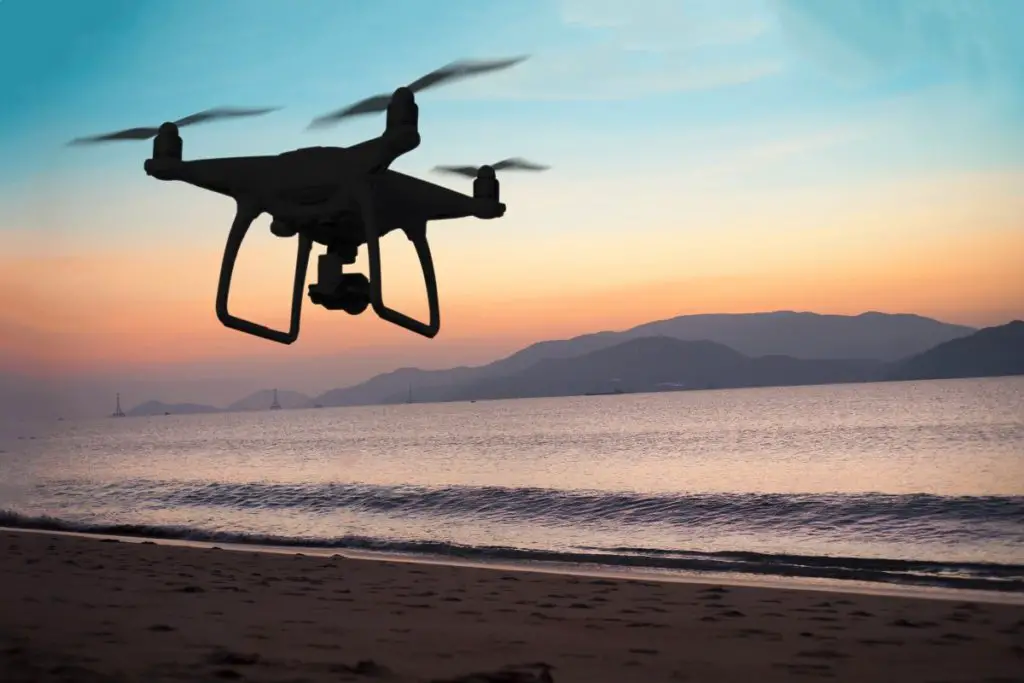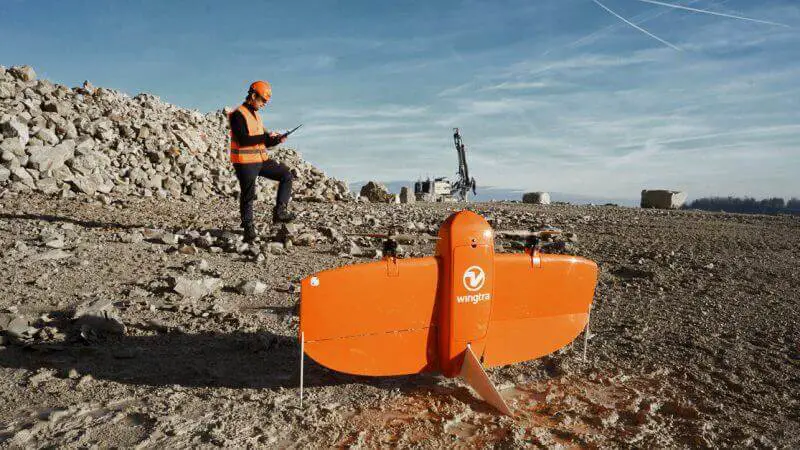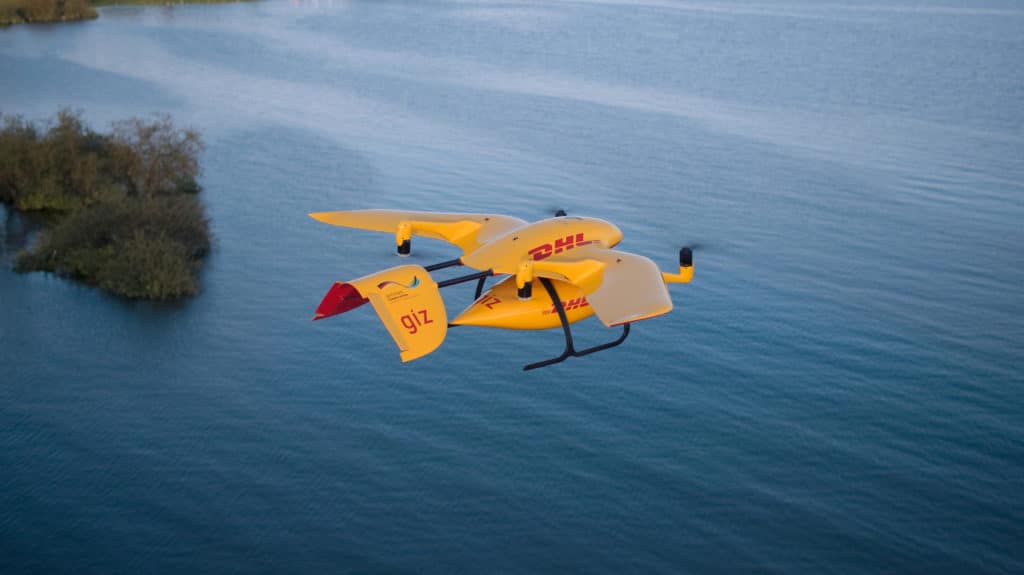In this article we’ll be looking at the different ways that you can earn money as a drone pilot, and what you can expect to make. You might not even realise that there are actually a few different ways that you can earn money as a drone pilot.
One of the many jobs newly created in the 21st century, is the role of the drone pilot or UAV operator! The drone industry is very fast paced, and even more diverse than you might imagine.
If you’re looking at a career change or a new business venture, one of the first questions you’d be asking is, is it worth it? Life isn’t all about money, but when considering such a large decision, it’s undoubtedly a big factor.
I started my drone career as a self-employed business owner and then transitioned into a full-time role for a large international company.
I’ll cover what you can expect to earn as an employee, what you can expect to charge as a business owner or freelancer, but most importantly, I’ll cover some of my personal tips to increase your earning potential.
Let’s first satisfy your curiosity.
Do Drone Pilots Make Good Money?
Drone pilots can make very good money! Drone pilots employed full-time can expect $40,000-$150,000 a year. Part time employees & freelancers earn between $200-1000 a day. Business owners have the highest potential with $500-100,000+ per project depending on duration, complexity and risk.
You’ll notice there’s a massive range of earning potential and you might be wondering why that is? I’ll cover why this disparity exists and some of the factors involved.

How Do Drone Pilots Earn Money?
If you’re looking to start your journey into the drone sector, you’ll need to understand the various ways that you can monetize your skills. There are 3 different ways that you can earn money as a certified drone pilot.
- Employment
- Freelance
- Self-employment
Each of these structures come with their benefits and pitfalls, but they also each have their own unique earning opportunities.
Like myself, it is possible to move between these structures as your skills, experience and needs change. You can progress through the levels as you grow, or you can pivot if you change your mind or the circumstances require it.
NOTE: Some countries require that you undergo a certification process before you’re able to earn an income using your drone and your skills. Be sure that you check with your local aviation body before doing so.
Drone Pilot Employment with a Company
Whether full-time, part-time or casually employed, there are two types of companies that you can be employed by to operate drones.
- A company that offers drone-related products or services. In this case, your job title would be ‘drone pilot’ or a similar offset of that phrase and your role will primarily focus on flight operations (i.e. Amazon’s Prime Air delivery service hires you to manage the delivery flights)
- A company that utilizes drones as an extra tool for their services. This is where your skills as a drone pilot is secondary to your skills in another field. Flying drones is only a means to achieve a more traditional goal. (i.e. Surveying Company hires you as a Surveyor with occasional drone use)
We won’t be covering the second employment type here. The reason is that it’s too varied and dependent on the industry. And technically, since you are not hired to be a drone pilot per se, it’s not wholly relevant to this article.
What I can say about the second employment type, is that it’s common to get paid a negotiable 10-20% higher rate when you can provide or participate in an internal drone program.
Earnings Range
For part-time and casual employees, you can expect to earn a rate around $20 all the way up to and exceeding $50 per hour.
Full-time employees have a similar rate with the added benefit of a full week of work. This can see full-time drone pilots earning anywhere from $40,000-100,000 on average.
However, there are some high-level organization positions that can far exceed this salary range. Every drone program requires a lead. This is generally known as a Chief Remote Pilot and can earn over $150,000 a year.
That said, this position is less about piloting drones and has a larger focus on regulatory compliance and business planning.
I’ve made a table below to explain the type of tasks at the extreme ends of this range to help you understand what happens at each level.
| Low. | Although you are a certified drone pilot, you are playing a support role to another pilot who is acting as pilot-in-command (PIC). You may simply be required to record data or monitor the airspace surrounding the operations. (Visual Observer – VO) |
| Med. | You are the pilot-in-command (PIC) of a UAV. You may be required to do all the flight planning and risk assessments for the operations. Where applicable, you will liaise with authorities and stakeholders. You may also train and supervise staff. |
| Max. | Chief Pilot or other high-level operational oversight. You manage all pilots on the roster and have the responsibility and liability for all flight operations. You must authorise all flights before they occur. Your main focus will be compliance, liaising with regulators and sometimes even the acquisition of new business or future growth. |
How To Improve Your Earnings?
As with most jobs, the most common way to earn more in a role is simply time in the system. The more time and experience you gain with a company, the more valuable you become.
But we’re not here to talk about the obvious, we want to know some concrete things we can do to earn more money. Here are some of my personal suggestions.
- Aviation Qualifications – Most of the knowledge required to fly drones commercially is based on traditional aviation. It is very beneficial to an employer if you have a manned pilot’s license as you will be familiar with many aspects of the job. This makes you more valuable and requires less time and effort to train you up.
- Training/Teaching Qualifications – Things such as a training and assessment qualification can help you earn more by taking on more responsibility. All new recruits require training, and you can bring additional value to that process.
- Management Qualifications – Whether it’s business management or project management, you can gain many skills to show your employer that you’re ready for a higher level position or to take on more responsibility.
- Increase Revenue – If you can gain new business for the company, you will be more valued and appropriately compensated. But that’s not the only way, you can also find more efficient ways to conduct operations or new ways to save the company money.
Freelancing in the Drone Industry
Freelancing is often managed by a third-party company that connects you with the work. But individuals can sometimes find opportunities outside of this framework as they get their name out.
This type of work structure is suited to those who have other income streams or are starting their journey into drones. The barrier for entry for freelancing is low and the workload can be quite inconsistent.
Unlike an employee, you may be required to provide your own equipment and insurances, which will impede your net profitability.
Earnings Range
Due to the safety and risk associated with drones, it is unlikely that a company will hire an individual freelancer for a complex task. And so, their earnings potential is very limited. I have heard some pilots earning $8 per job, starting out.
However, given the right arrangement a freelancer can earn a similar amount to an employed pilot as an hourly return ($20-50 per hour).
But it is possible to see upwards of $1000 per day on larger projects. Especially projects like filming for the entertainment industry, where many additional charges apply, it all adds up.
In the table we’ll explain some contrasting scenarios.
| Low. | You bid against other pilots online in order to win a photography job. The job is small and takes little time, but pays poorly. |
| Med. | You are hired by another pilot to assist with a small team operation. Likewise, you may get hired by a non-drone company to conduct basic photography or video work. |
| Max. | You are hired as a short-term replacement pilot on a large-scale project. This is generally done as a last resort when time is short or other options have been exhausted. |
How To Improve Your Earnings?
The biggest way to increase your earnings as a freelancer is to build relationships and become a trusted pilot for your clients.
I recommend building relationships and skills while freelancing, until you can move into starting your own business to operate under.
You can still freelance under a business structure, but you will have a contract in place and a higher earning potential.
Running Your Own Drone Business
Drone businesses are unique because drones are simply a tool for accomplishing a specific task. Drone businesses are B2B (business-to-business) and serve other businesses from a wide variety of sectors.
The industry that you serve can make your business look completely different from another. This will also have the most significant effect on your earnings potential.
That’s why the self-employed drone business owner has the widest range and the highest earning potential.
You might be interested in my other article, 5 Under Utilized Methods To Market Your Drone Business
Earnings Range
Here’s the thing to remember: the more complex the flight, the more you’ll earn.
For the lower range of expectations, you can expect to earn $200-500 per project. Note that this is per project and not per day. So your daily potential is only limited to how much time can be allocated per project.
At the other end of the extreme, you can be earning easily over $100,000 per project. But these types of projects aren’t completed in a single day. Generally these contracts last many months and will require some specialised equipment and personnel in order to satisfy the requirements.
Here are some scenarios to explain what these various business levels look like:
| Low. | Your primary payload is an RGB sensor and your deliverables are limited to photographs and video. You are the only pilot in your business. Your drone fleet consists of 1-2 consumer-grade drones weighing 2kg or less. |
| Med. | You use a wide range of payloads and your deliverables are data-focused. You employ multiple drone pilots and your fleet has drones in various weight classes. |
| Max. | You fly specialised drones that weigh over 25kg or you fly complex operations, such as within controlled airspace or BVLOS long-range missions. Your applications are industrial or military. You have a large roster of pilots or a small roster of highly specialised pilots. |
How To Improve Your Earnings?
The key methods to increase your revenue are focused around improving the complexity of your offering. The more difficult or dangerous a flight operation is, the less competition there will be, and thus the more appealing your pricing will become.
There are a few areas to improve the complexity of your offerings. they include:
- Operations in controlled airspace – There is far less competition when operating within controlled airspace, especially operations close to aerodromes. You will need to liaise with authorities and be granted approval – as well as fulfil a range of safety requirements.
- Operations in prohibited, restricted or dangerous airspace – The approvals for these airspaces can be extremely difficult to obtain, but with a robust safety case it is possible. Few are granted these permissions and that could set you apart.
- Operations within the movement area of an aerodrome – There is a possibility to fly in the movement area on a runway for various purposes, but once again, approvals are everything. Safety is of key concern, and this is a high risk operation. Be prepared to create a strong safety plan and be rejected continuously until you perfect it.
- Medium to large sized drone – Drones in the medium category weigh above 25kg and large drones are classed as greater than 150kg. If you can gain approval to fly these drones, you will have a unique edge over the competition. These drones can carry valuable payloads or be used for their extremely long flight times.
- Upgrade your payload – An RGB (red-green-blue) camera can only gather so much data. There are a range of sensors that will allow you to collect data for more technical purposes. Look into multispectral applications like infrared or consider a LiDAR sensor. These will be very costly, but will provide a high return on investment (ROI).
- Interpret Data – If you can gather and interpret the data, your deliverable becomes twice as valuable. This is where a lot of value can be provided to your customers. It will require expertise or training in new fields.
- Expand – Simply adding volume to your operations will increase revenue. To do this, you will need to hire and train additional drone pilots. You will need to move away from daily operations and focus on managing the business and acquiring new customers.
Final Thoughts
The drone industry is very ripe with opportunity and there are many ways to make money.
I hope this article has been beneficial to give you a good idea about how much you can earn as a professional in the drone industry but especially, I hope this helps you earn more money for yourselves and your families.
If you’re looking to take your first step, and you’re curious as to how much a professional drone would cost, check out my other article – How Much Does a Professional Drone Cost?




